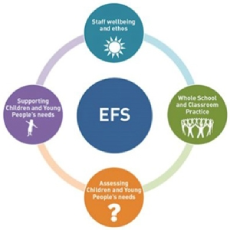Phonics and Reading
Reading Scheme
At Marus Bridge we have a banding system that is split into sublevels. After assessments in phonics and reading it is clear which band the children should be on. In the Foundation Stage children start on picture books to develop their book skills (such as turning the page, talking about the pictures). The book scheme moves through layered progression, gradually challenging the children at their level. We use a broad range of publishers to give the children experience with a wide range of text types.
After children have moved through the banding system, they continue to enjoy a wide range of literature through ‘free reading’ which allows them to take an active role in choosing their own books, following their own interests and promoting ‘reading for pleasure.’
We also have a wide range of newly bought guided reading books at each phase. Children work on a book set a sublevel higher than the level they’re working at.
Phonics Programme
At Marus Bridge Primary School, we teach phonics using a linguistic phonics programme called Sounds-Write. Sounds-Write is a highly structured, multi-sensory, incremental, and code-oriented,
instructional approach to teaching all children to read and spell. The Sounds-Write programme is implemented in the classroom and provides fast and effective teaching for children at all levels. Children are taught to read and spell from entering their Reception year.
The Sounds-Write programme is successful in teaching children to read and spell because it
starts with what all children know from a young age – the sounds of their spoken language.
Then, using a systematic approach and quality modelling, it teaches them how these sounds are coded within our writing system.
Our approach teaches the conceptual and factual understanding needed to become an effective reader:
- that letters are spellings of sounds: visual language is a representation of spoken language
- that a spelling can contain one, two, three, or four letters - examples are: s a t, f i sh, n igh t and w eigh t
- that there is more than one way of spelling most sounds: the sound 'ae', spelt as in 'name', can be represented as in 'table', in 'rain', in 'eight', in 'play', and so on
- that many spellings can represent more than one sound: can be the sound 'e' in 'head', 'a-e' in 'break', or 'ee' in 'seat'
If you would like to learn more about our approach to phonics, please register for the online course, free for everyone! Click here to see the course and register online!












